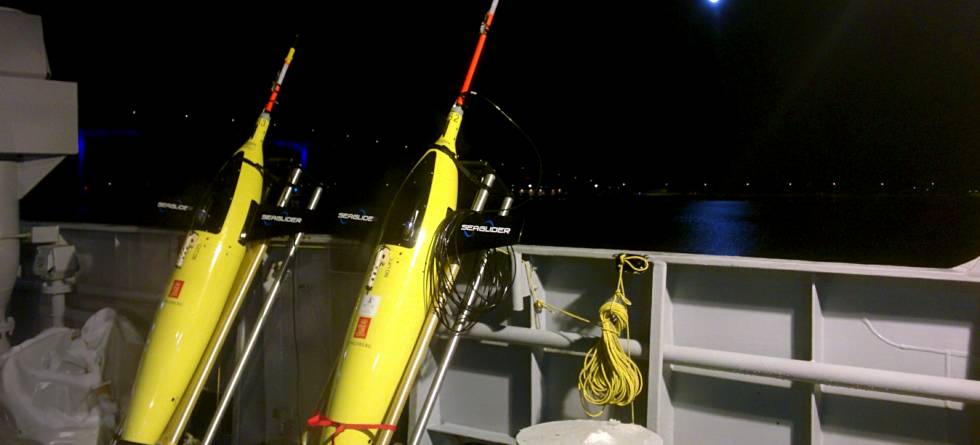Written by Anthony Bosse, Postdoc at the Bjerknes Centre and the Geophysical Institute at the University of Bergen
There are hardly-accessible places in the world’s oceans, especially above the polar circle and during the winter.
In the Lofoten Basin – a 3300 meter deep basin between northern Norway and Greenland – a spectacular permanent vortex has been observed over the last decades. The 50 kilometer radius water column swirling clockwise at speeds up to 80 cm/s was hypothesized to keep its momentum by interacting with other vortices and winter mixing due to surface cooling, but measurements were too scant to address that question.
In the PROVOLO project (NFR project led by Prof. Ilker Fer), researchers have used autonomous platforms, gliders in particular and acoustically-tracked subsurface drifters, to collect year-round measurements in the Lofoten Vortex and unravel the processes governing its longevity.
In a recent study by Bosse et al. published in Scientific Reports, the authors showed a surprisingly coherent vortex, in which most drifters from the surface to more than 1000 meters deep were trapped for their deployment time (up to 15 months). Authors identified the winter as the season prone to lateral exchanges between the vortex core and the surrounding.
Interactions with other eddies were observed and an energy budget finally revealed the importance of winter convection in modulating the energy of the vortex.
Reference
Bosse A., Fer I., Lilly J.M., Søiland H. Dynamical controls on the longevity of a non-linear vortex : The case of the Lofoten Basin Eddy. Sci Rep 9, 13448 (2019)

